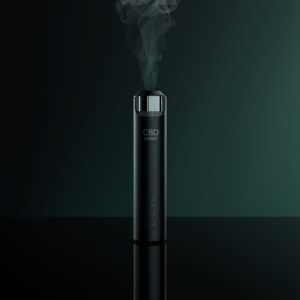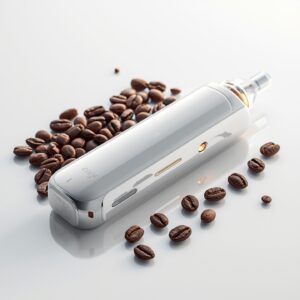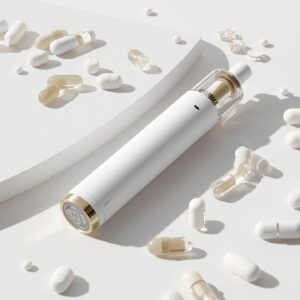What if the next inhale of your’ vape was not a purpose driven of desire, but a deep breath of healing. Feel as the inhale of vitamins and minerals filled up your lungs making you feel energized and full of life. What if vaping wasn’t just a bad habit, is it possible for us to re-design this habit into more than just high doses of nicotine and flavorings to spike our dopamine? Read and find out.
Here what’s already out there

We all know about our regular everyday vape. We have also seen a variety of specialized vapes like no nicotine vapes, vapes in which you can manually change the nicotine level or the ice level, vapes in which you can change the flavour with a touch of a button. More recently we have experienced:
- CBD Vapes
- THC Vapes
- Caffeine Vapes
- Nootropics (e.g. L-theanine, botanical actives) in minimal doses.
All of which we are going to discuss in detail now. As well as why we haven’t been seeing vitamin vapes around & why we probably won’t for a very long time (if ever).
CBD Vaping

Something which began in 2016-2018 in North America and Europe. The 2018 U.S. Farm Bill legalized hemp-derived CBD (containing less than 0.3% THC), and suddenly every wellness brand from LA to London wanted to bottle “calm” and “clarity.” While tinctures and gummies dominated the health aisle, vaping offered a faster, flashier entry point for the smokers out there.
Brands promised their customers the usual effects of CBD (anti-anxiety, pain relief, mood enhancement, improved focus etc). A therapeutic alternative to nicotine, turning the idea from “Vice” into “Wellness”.
The first wave of vapes was designed just like normal vape flavour: propylene glycol, vegetable glycerin and CBD isolate as well as some flavouring with terpenes, couldn’t be simpler. So, what is the big deal?
What happens when you heat up CBD isolate
- Low-Medium Heat: At low to moderate temps (160–180°C), CBD vaporizes efficiently, maintaining its chemical integrity and delivering predictable effects.
- High Heat: At high temps (above 230°C), common in poorly calibrated or disposable vape pens, CBD can degrade into other compounds, including Δ9-THC (psychoactive) or cannabielsoin (oxidized byproduct). Which isn’t exactly the idea now is it.
- Studies have shown that extreme heating can also produce toxic degradation products like methacrolein and formaldehyde, mainly when the carrier liquids (PG/VG) overheat.
Companies are catching up now using ceramic coils instead & slovent free distillates. Many brands now emphasize terpene preservation, not just for flavor, but because terpenes also lower vaporization temperature and protect cannabinoids from burning.
THC Vaping

This came as a surprise to most people when I say this was only just ahead of CBD vaping, starting around 2015-2016. As an underground trend, an alternative to burning cannabis out in the open. This was a chance to have a more discrete method, with 300% more efficiency. Get higher faster and more discretely, doesn’t sound like a bad idea.
After that it turned into a mainstream trend pushed by legalization in some countries or states. Early adopters were in U.S. states like California, Colorado, and Washington, where legal dispensaries began selling cartridges filled with cannabis distillate, a thick, amber oil containing 80–95% Δ9-THC. The pitch was irresistible: no rolling, no smell, no ash, just instant, controlled effects in a sleek little pen.
What happens to THC under different temperatures
THC (Δ9-tetrahydrocannabinol) is relatively stable under heat, definitely more than CBD to say the least.
-
Optimal vaporization range: around 155–175°C. At this range, THC aerosolizes efficiently without significant breakdown.
-
Above 220°C: THC begins to degrade into compounds like CBN (cannabinol), mildly psychoactive but more sedative.
-
Beyond that point, you start producing aromatic hydrocarbon byproducts (like benzene and methacrolein) if the oil or carrier overheats.
-
Terpenes (which give the strain its flavor and aroma) vaporize even earlier, between 120–160°C, and they can oxidize or burn quickly if the vape runs too hot.
FYI: The tip of a joint burns at 600–900°C (1110–1650°F) which means complete combustion, cannabinoids and terpenes are destroyed, and toxic byproducts form (CO, tar, benzene, etc.). While the mid-section gets to about 200–400°C (390–750°F), so at least you will get some flavour out of that and less incinerated particles.
Caffeine vaping

Caffeine vapes appeared around 2019-2021, born out of the energy on demand movement, when everything energy was flying off the shelves and there were more energy drinks than any other type of cooldrink. The idea was instant energy, no sugar, no calories and no wait.
Products like HEALTHVAPE Energy, Melo Air Caffeine Diffuser, and Inhale Health Caffeine Pen promised quick mental boosts via inhaled caffeine and vitamin B12. They looked identical to disposable nicotine vapes, same sleek hardware, fruity flavors, LED tips, just repurposed for a “wellness” audience who didn’t want the nicotine stigma.
What Happens Chemically When You Vape Caffeine
- Caffeine’s sublimation (vaporization) point: around 178°C, but that’s under ideal lab conditions in pure form.
- When heated with carrier liquids like PG or VG (used in vapes), caffeine often decomposes before it fully vaporizes, producing bitter degradation products.
- This means a lot of the “caffeine vapor” may never actually deliver meaningful doses — or it could break down into 1,3,7-trimethyluric acid and related compounds that have unknown inhalation safety.
Right now caffeine vaping is not ideal since the complexity of is just too far out of reach. Caffeine does not dissolve in oil, its only water soluble (dissolvable). Since this would hurt too much to smoke, its unethical. Maybe it’s best to smoke a coffee flavored vape and just drink something with caffeine in it at the same time.
Smoking caffeine can be dangerous & is not researched enough. The lungs aren’t designed to digest caffeine or other vitamins, that’s the digestive tracks job.
Vaping vitamins

Yes, this is something people have tried, not for commercial sale, but mostly for TikTok trends, social media experiments, and personal curiosity. The idea of “inhaling your vitamins” popped up around 2017–2019, right when CBD and caffeine vapes started making waves.
Some of these so-called “wellness vapes” came from the same companies we mentioned earlier. But the mindset behind them — that if the ingredients are healthy, then inhaling them must be healthy too — is completely flawed. We’re designed to breathe air, which is roughly 78% nitrogen, 21% oxygen, and a trace of argon, carbon dioxide, and water vapor. Anything outside of that formula isn’t natural to our lungs, and definitely not doing us any favors.
The real danger is that the risks are invisible. Just because you can’t see the damage doesn’t mean it isn’t happening, in fact, that makes it more dangerous. If something goes wrong, it’s not like we can just cough it out. Think popcorn lung, nobody saw it coming, but it was already too late when they did.
Alternatives

To really understand what it means to have a health vape is very simple. Take what is good for us to inhale naturally (nitrogen, oxygen, water vapor etc) & amplify the healthy ones or amplify the scents you would naturally pick up in the wild or in your foods.
Oxygen inhalers:
There are a few companies that have done this and have been successful as well. Nothing better than a boost of oxygen while you are working out, trying to wake up and just for kicks. Recreational oxygen is the healthiest manner of inhaling molecules for fun.
Nose vapes / nasal inhalers (scent altering devices that go inside your nose)
A feeling good inhaler. Don’t stress yourself about unhealthy habits anymore and carry around your own scent inhaler that works like a nasal spray, except this is pure recreational. The kick is the scent & the side effect is nothing.
Conclusion: First real breath

Maybe the future of vaping isn’t in a cartridge or a cloud, maybe it’s in stepping outside for one.
We’ve reached a point where everyone’s chasing some form of stimulation, caffeine in vapor, vitamins in mist, nicotine in disguise. But none of these “functional highs” actually fix the problem; they just rename it.
Real energy, real calm, and real satisfaction don’t come from an LED-tipped device. They come from oxygen, literal breath, movement, sunlight, adrenaline. The kind of dopamine you earn by doing something, not inhaling something. Exercise, fresh air, new experiences, they’re the original “natural stimulants,” and they’ve got no expiry date or side effects.


